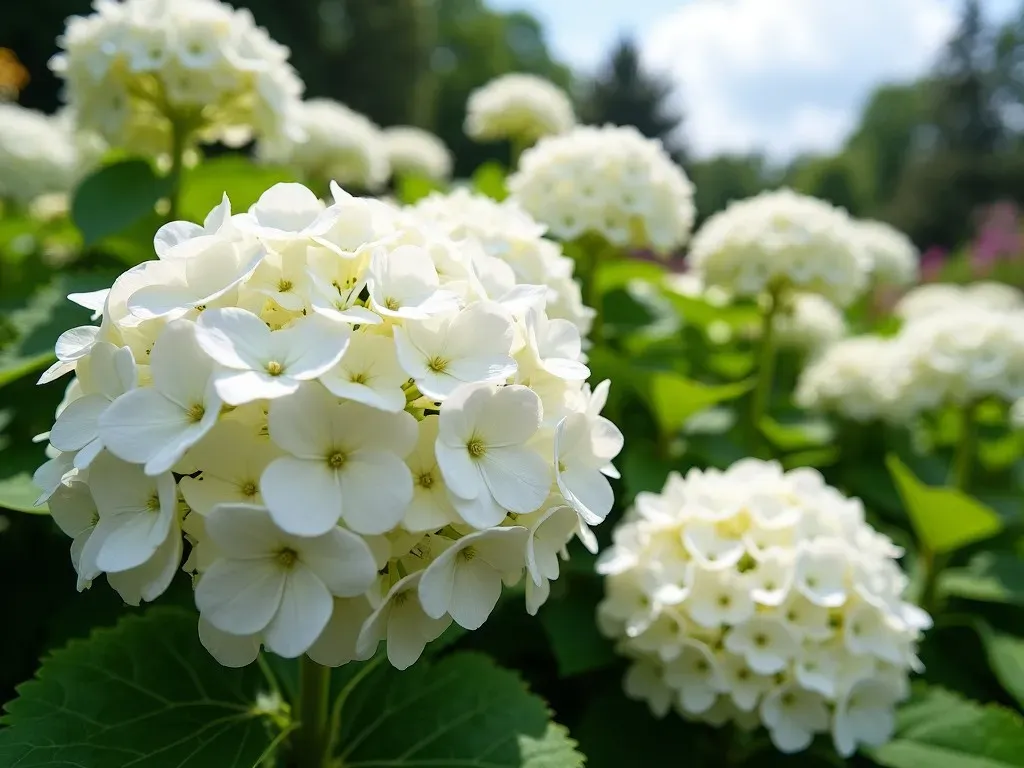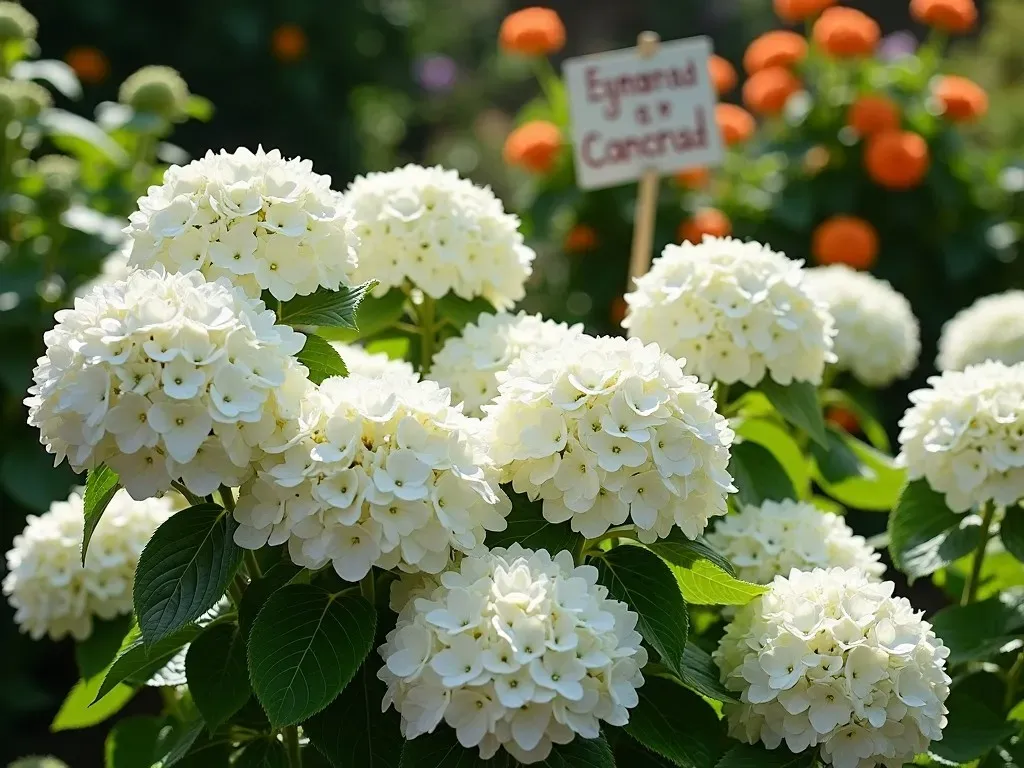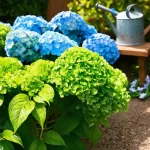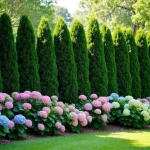The hydrangea white plant is a charming shrub known for its stunning white blooms that add elegance to any garden. Whether you are a seasoned gardener or a novice, incorporating this beautiful plant into your landscape can create a tranquil atmosphere and enhance your outdoor space.
The hydrangea family consists of various species, including bigleaf, smooth, climbing, oakleaf, and panicle hydrangeas, each offering an array of sizes and forms, suited for different garden aesthetics. Notably, white hydrangeas can evoke a sense of serenity, making them a popular choice among gardeners everywhere.
Understanding Hydrangeas: Facts and Figures
Hydrangeas are deciduous shrubs that can thrive in USDA plant hardiness zones 3-9, with specific varieties adapted to various conditions. Here are some key facts about hydrangeas:
| Attribute | Details |
|---|---|
| Variability | Bigleaf, Smooth, Climbing, Oakleaf, Panicle |
| Bloom Time | Typically summer to fall |
| Soil Preference | Well-drained, fertile soil |
| Light Needs | Prefers morning sun, afternoon shade |
| Height | Ranges from 3 to 8 feet depending on variety |
| Hardiness Zones | 3 to 9 |
Common white hydrangea Varieties
Many delightful white hydrangea varieties can enhance your garden. Some favorites include:
-
Annabelle (Hydrangea arborescens ‘Annabelle’)
- Large, round flower clusters.
- Height: 3-5 feet.
- Bloom time: Summer.
-
Berry White (Hydrangea paniculata ‘Berry White’)
- Cone-shaped, white to pink blooms.
- Height: 4-6 feet.
- Bloom time: Late summer to fall.
-
White Dome (Hydrangea arborescens ‘White Dome’)
- Upright and rounded shrub with fluffy clusters.
- Height: 3-4 feet.
- Bloom time: Late spring to summer.
-
Bobo (Hydrangea paniculata ‘Bobo’)
- Compact dwarf variety.
- Height: 3 feet; spreads to 3-4 feet.
- Bloom time: Summer.

Where To Find White Hydrangeas Near You
To introduce these magnificent plants into your garden, you can explore local nurseries or garden centers. Additionally, many reputable online retailers offer white hydrangeas for sale. A great resource for finding plants nearby is websites such as Better Homes & Gardens, which provides a variety of recommendations.
Growing Conditions and Care Tips
Hydrangeas, particularly white varieties, thrive in specific growing conditions. To help them flourish, consider the following:
Soil and Watering
-
Soil: They prefer well-drained, fertile soil rich in organic matter. Compacted or sandy soils should be amended with compost to enhance drainage and nutrient content.
-
Watering: Regular watering is crucial, especially during dry spells. Keep the soil consistently moist but not waterlogged. A weekly deep watering can encourage robust growth.
Sunlight
- Light Requirements: Hydrangeas bloom best in dappled sunlight. Morning sun with afternoon shade is preferable for optimal flower production and health.
Fertilization
- Nutrients: A slow-release fertilizer, applied in early spring, helps support flowering. Avoid high-phosphorus fertilizers, as they can negatively affect bloom quality.
Potential Pests and Diseases
While hydrangeas are generally hardy, they can be susceptible to certain pests and diseases. Here are some common issues to watch for:
| Issue | Symptoms | Management |
|---|---|---|
| Aphids | Distorted leaves, sticky residue | Insecticidal soap or neem oil |
| Powdery mildew | White powdery fungal growth | Ensure proper air circulation, remove affected leaves |
| Root rot | Yellowing leaves, wilting | Well-drained soil, avoid overwatering |
| Leaf spot | Dark spots on leaves | Remove affected leaves, systemic fungicide |
Regularly monitoring your plants and maintaining proper care will promote healthy growth and lush blooms.

Landscape Ideas with White Hydrangeas
Incorporating white hydrangeas into your landscape design can elevate your outdoor aesthetics. Here are some creative ideas:
-
Border Planting: Use white hydrangeas to create a stunning floral border around pathways or garden beds.
-
Mixed Flower Beds: Combine white hydrangeas with colorful perennials or annuals for an eye-catching display.
-
Foundation Planting: Position white hydrangeas against the foundation of your home for a classic, polished look.
-
Containers: Plant white hydrangeas in large pots to create dynamic outdoor spaces, perfect for patios or balconies.

FAQs about Hydrangea White Plant
Q1: How often should I water my white hydrangeas?
A1: Water deeply once a week, or more frequently during dry spells to ensure consistent moisture.
Q2: Can white hydrangeas change color?
A2: Unlike blue and pink hydrangeas, white varieties do not change color based on soil pH.
Q3: When is the best time to prune white hydrangeas?
A3: Prune in late winter or early spring before new growth begins to encourage healthy blooms.
Q4: Are white hydrangeas deer-resistant?
A4: While not entirely deer-proof, many gardeners find that deer tend to avoid hydrangeas.
Q5: How do I propagate white hydrangeas?
A5: You can propagate white hydrangeas through softwood cuttings taken in summer or division in spring.
Incorporating the hydrangea white plant into your garden will undoubtedly create a serene oasis that delights the senses. With proper care and creativity, your landscape can showcase the majestic beauty of these stunning blooms for years to come.


